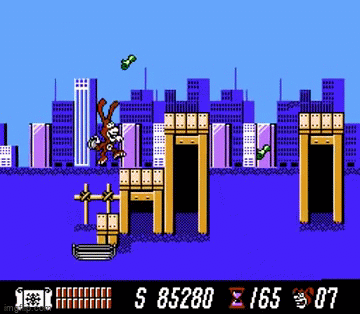Taxonomy of Virtual Spaces
Back in 2002, Aki Järvinen of the University of Tampere devised a system for studying various audiovisual styles seen in digital games. He presented his work at his school's Computer Games and Digital Cultures Conference in a paper titled "Gran Stylissimo: The Audiovisual Elements and Styles in Computer and Video Games."
Järvinen's goal is similar to mine: to understand digital games in terms of aesthetic styles rather than game genres or technological achievement. He adapts the concept of "style" from art history "to characterise dominant techniques in [the creation of art] during different historical periods... or... in relation to [a] certain author or 'school'" [2002, pg. 114]. My own concept of spatial paradigms sets out to define patterns and models of knowledge and methods of conveying space in a virtual world. Mine is adapted from Giovanni Dosi's concept of technological paradigms ("Technological Paradigms and Technological Trajectories," Research Policy, 11(3), 1982), which was adapted from Thomas Kuhn's scientific paradigms (The Structure of Scientific Revolutions, 1962).
Audiovisual Elements of Game Environments
Järvinen looks at three different audiovisual "elements" that "can be discerned from all computer and video games."
- Space/environment ("a football field, for example")
- Different objects ("characters, things, etc.")
- Symbols ("point counters, health meters, descriptions, help texts, etc.")
This is a way of dividing up the disparate parts of a digital game screen image, which I argue is always a hybrid amalgam of different image elements. My own system similarly divides the image into three image planes for agents, environment, and background/foreground. This follows the Game FAVR systems three conceptual planes for agents, in-game environment, and off-game environment. Note that Järvinen includes "Symbols," non-diegetic UI and HUD elements that convey information to the player.
Game Environment Construction
Järvinen declares space as the most prominent element in digital games. He further defines the game environment as being built on dimension, points of perception, visual outlook, soundscape, and senso-motority.
Dimension
Essentially, 2-D or 3-D. Isometric "perspective" is mentioned, but it is unclear if he considers this to be a 2-D or 3-D dimensionality.
Point of Perception
"Dimension and point of perception together make up the game environment's rough form. Point of perception is the position from which the player perceives... what goes on in the game environment." This is mostly 1st person, 2nd person (like in text adventure games), or 3rd person views of the game world. Notable is the possibility of "different, co-existing points of perception," such as my system's example of a mini-map.
Note that the categorization of a "point" of perception implies a single, subjective station point from which the environment is observed, likely through linear perspective. In orthogographic, oblique, or axonometric projections, there is no single "point of perception" in which a Cartesian observer may be situated.
Visual Outlook
The dimensionality and PoP are the stage upon which the visual outlook is drawn, down to the textures and polygons. The visual outlook may draw its appearance from other forms of media, especially in adaptations of sports, cartoons, or film properties.
Audiovisual Motifs
These are motifs shared between digital games and other forms of media. Examples are "bullet time" (seen in The Matrix and in Max Payne) and the audiovisuals of a motion tracker device (seen in Aliens and various Aliens vs. Predator games).
Soundscape
The use of diegetic (in-game sounds of the environment and objects in it) and non-diegetic (such as a musical soundtrack) sounds.
Senso-motorism
The means of the player's interactions with the game environment. How does the physical interface of the game work on the player's senses? Elements of haptic feedback, the use of game controller, and such appear to fall under this category.

Select games on a multi-axial audiovisual style spectrum from Gran Stylissimo (Järvinen, 2002)
The Audiovisual Styles
He defines three main audiovisual styles that existing games can be categorized into. Photorealism includes to style subcategories of televisualism and illusionism.
- Photorealism
- Televisualism
- Illusionism
- Caricaturism
- Abstractionism
Photorealism aims for highly lifelike, photographic likenesses of objects and environments.
Televisualism aims to reproduce the experience of a television broadcast, often seen in sports games or games that replicate game shows.
Illusionism is for realistically rendered fantastic or imaginary imagery.
Caricaturism is for the look of comic books, cartoons, and caricatures. Notably, the cel-shaded look pioneered by Jet Set Radio belongs here.
Abstractionism does not aim to simulate easily recognizable characters or environments. Many puzzle games, such as Tetris, fall under this category, along with many early games with limited graphics, such as Pong. Other notable abstract titles include Tempest, Vib-Ribbon, and Rez.
Conclusion
Järvinen and I have shared aims, but different approaches to tackling the problem of creating a set of aesthetic styles for digital games. His system uses motifs and visual outlooks to focus on similarities to other forms of media. My system focuses on the intrinsic qualities of digital games and how they embody the player into a virtual environment.

























